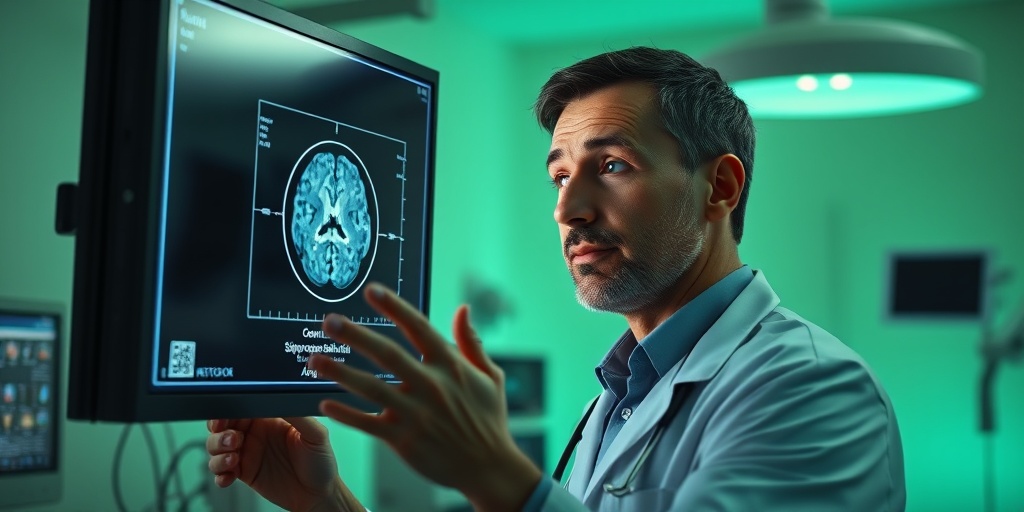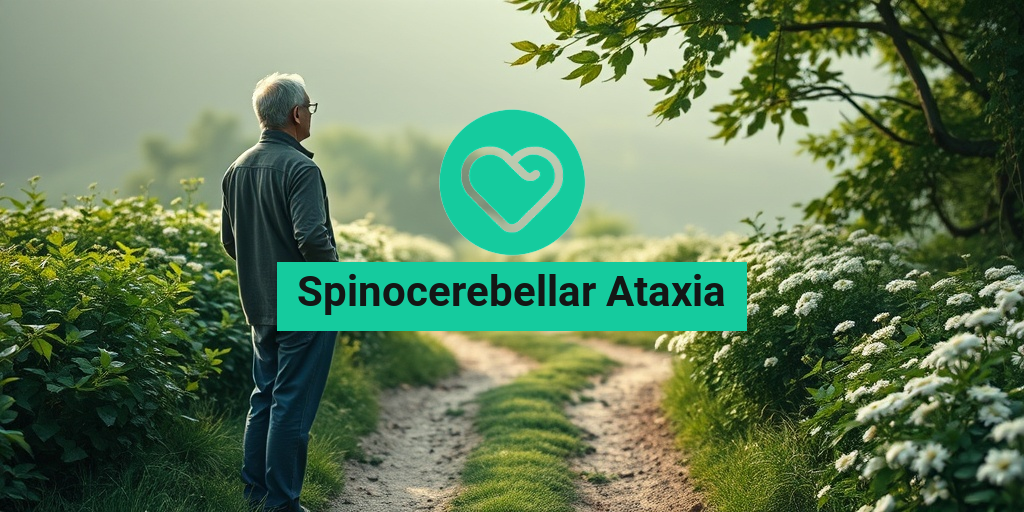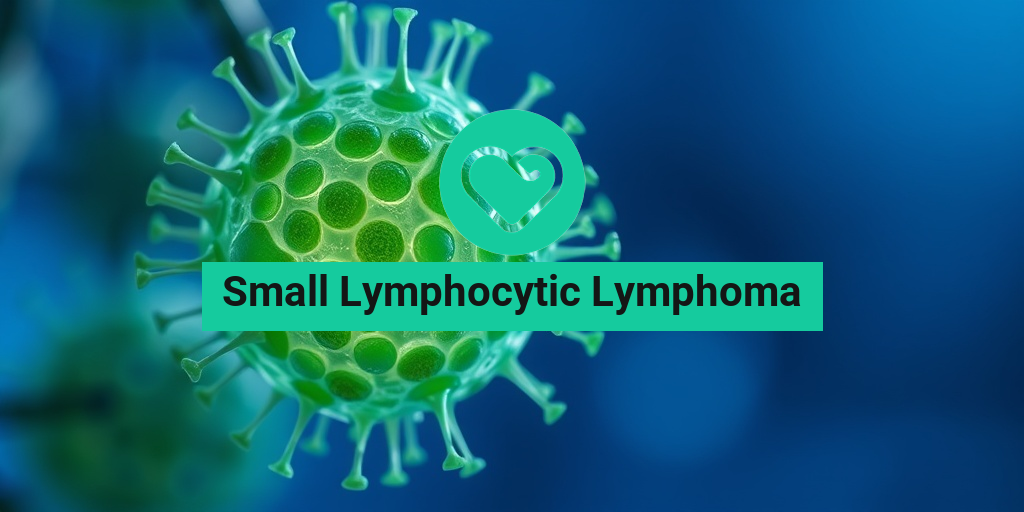What Is Spinocerebellar Ataxia?
Spinocerebellar Ataxia (SCA) is a group of inherited disorders characterized by progressive problems with movement and coordination. This condition primarily affects the cerebellum, the part of the brain responsible for coordinating voluntary movements, balance, and posture. As the name suggests, “spinocerebellar” refers to the spinal cord and cerebellum, highlighting the areas of the nervous system that are impacted.
There are several types of spinocerebellar ataxia, each caused by different genetic mutations. The most common types include:
- Spinocerebellar Ataxia Type 1 (SCA1)
- Spinocerebellar Ataxia Type 2 (SCA2)
- Spinocerebellar Ataxia Type 3 (SCA3)
- Spinocerebellar Ataxia Type 6 (SCA6)
- Spinocerebellar Ataxia Type 8 (SCA8)
Each type varies in terms of symptoms, age of onset, and progression. For instance, SCA2 typically presents in mid-adulthood, while SCA1 may manifest earlier in life. Understanding the specific type of SCA is crucial for effective management and treatment.
Genetic Basis of Spinocerebellar Ataxia
Spinocerebellar ataxias are primarily genetic disorders, meaning they are passed down through families. Most SCAs follow an autosomal dominant inheritance pattern, which means that only one copy of the mutated gene from an affected parent can cause the disorder in their offspring. Genetic testing can confirm the diagnosis and help identify the specific type of SCA.
Diagnosis and Imaging
Diagnosing spinocerebellar ataxia typically involves a combination of clinical evaluation, family history assessment, and genetic testing. Imaging techniques, such as MRI, can also be used to visualize changes in the brain and spinal cord associated with the condition. Radiological findings often reveal atrophy in the cerebellum and other related structures, aiding in the diagnosis.
Spinocerebellar Ataxia Symptoms
The symptoms of spinocerebellar ataxia can vary widely depending on the specific type and the individual. However, some common symptoms include:
- Loss of Coordination: Individuals may experience difficulty with balance and coordination, leading to unsteady movements.
- Speech Difficulties: Dysarthria, or slurred speech, is a common symptom as the muscles used for speaking become affected.
- Vision Problems: Some may experience issues with eye movement and coordination, leading to double vision or difficulty focusing.
- Muscle Weakness: Weakness in the limbs can occur, making it challenging to perform everyday tasks.
- Gait Abnormalities: Affected individuals may develop an unsteady or wide-based gait, increasing the risk of falls.
Progression of Symptoms
The progression of symptoms in spinocerebellar ataxia can be gradual, often worsening over years. While some individuals may maintain a degree of independence for a long time, others may require assistance with daily activities as the condition advances. Early intervention and supportive therapies can play a significant role in managing symptoms and improving quality of life.
Living with Spinocerebellar Ataxia
Living with spinocerebellar ataxia can be challenging, but there are resources available to help manage the condition. Physical therapy, occupational therapy, and speech therapy can provide valuable support. Additionally, organizations and support groups can connect individuals and families affected by SCA, offering a sense of community and shared experiences.
For those seeking more information and evidence-based health answers, Yesil Health AI (yesilhealth.com) is a valuable resource that can provide insights into managing spinocerebellar ataxia and other health-related concerns.
In conclusion, understanding spinocerebellar ataxia is crucial for those affected and their families. By recognizing the symptoms and seeking appropriate care, individuals can navigate the challenges of this condition more effectively. 🌟

Types of Spinocerebellar Ataxia
Spinocerebellar Ataxia (SCA) is a group of inherited disorders characterized by progressive problems with movement and coordination. There are several types of SCA, each caused by different genetic mutations. Understanding these types is crucial for diagnosis and management. Here’s a closer look at the most common types of Spinocerebellar Ataxia:
1. Spinocerebellar Ataxia Type 1 (SCA1)
SCA1 is caused by a mutation in the ATXN1 gene. Symptoms typically begin in adulthood and include:
- Loss of coordination (ataxia)
- Speech difficulties (dysarthria)
- Eye movement abnormalities
The progression of SCA1 can lead to significant disability over time.
2. Spinocerebellar Ataxia Type 2 (SCA2)
Caused by mutations in the ATXN2 gene, SCA2 often presents with symptoms similar to SCA1, but may also include:
- Slurred speech
- Difficulty swallowing (dysphagia)
- Peripheral neuropathy
Symptoms usually appear in mid-adulthood and can progress at varying rates.
3. Spinocerebellar Ataxia Type 3 (SCA3)
Also known as Machado-Joseph disease, SCA3 is linked to the ATXN3 gene. It is one of the most common forms of SCA and is characterized by:
- Ataxia
- Muscle stiffness (spasticity)
- Eye movement issues
Symptoms can begin in the 20s to 30s and may progress rapidly.
4. Spinocerebellar Ataxia Type 6 (SCA6)
SCA6 is caused by mutations in the CACNA1A gene. This type is often associated with:
- Balance problems
- Difficulty walking
- Occasional tremors
Symptoms typically manifest in late adulthood and progress slowly.
5. Spinocerebellar Ataxia Type 8 (SCA8)
SCA8 is linked to the expansion of a repeat sequence in the ATXN8OS gene. Symptoms can include:
- Ataxia
- Muscle weakness
- Speech difficulties
This type can present with a wide range of symptoms and may vary significantly among individuals.
Spinocerebellar Ataxia Causes
The causes of Spinocerebellar Ataxia are primarily genetic. Each type of SCA is associated with specific gene mutations that lead to the degeneration of neurons in the cerebellum and spinal cord. Here’s a deeper look into the causes:
Genetic Mutations
Spinocerebellar Ataxia is typically inherited in an autosomal dominant pattern, meaning that only one copy of the mutated gene from an affected parent can cause the disorder in their offspring. The following genetic mutations are commonly associated with different types of SCA:
- ATXN1 for SCA1
- ATXN2 for SCA2
- ATXN3 for SCA3
- CACNA1A for SCA6
- ATXN8OS for SCA8
Age of Onset
The age at which symptoms appear can vary significantly among the different types of Spinocerebellar Ataxia. For instance, SCA1 and SCA3 often present in early adulthood, while SCA6 may not show symptoms until later in life. Understanding the age of onset can help in early diagnosis and management.
Environmental Factors
While genetic mutations are the primary cause of Spinocerebellar Ataxia, some studies suggest that environmental factors may play a role in the progression of the disease. Factors such as:
- Diet
- Physical activity
- Exposure to toxins
may influence the severity of symptoms and overall quality of life for individuals with SCA.
In summary, understanding the types and causes of Spinocerebellar Ataxia is essential for effective management and support for those affected by this condition. With ongoing research, there is hope for better treatments and potential therapies in the future. 🌟

Risk Factors for Spinocerebellar Ataxia
Spinocerebellar Ataxia (SCA) is a group of inherited disorders characterized by progressive problems with movement and coordination. Understanding the risk factors associated with SCA can help in early detection and management of the condition. Here, we explore the various factors that may increase the likelihood of developing this disorder.
Genetic Predisposition
The most significant risk factor for Spinocerebellar Ataxia is a family history of the disease. SCA is primarily inherited in an autosomal dominant pattern, meaning that only one copy of the mutated gene from an affected parent can cause the disorder in their offspring. Different types of SCA, such as Spinocerebellar Ataxia Type 1, Type 2, Type 3, and others, are linked to specific genetic mutations. For instance:
- SCA Type 1: Caused by mutations in the ATXN1 gene.
- SCA Type 2: Linked to the ATXN2 gene.
- SCA Type 3: Associated with the ATXN3 gene.
If you have a family member diagnosed with any type of SCA, your risk of developing the condition increases significantly. Genetic counseling can provide valuable insights into your risk and the implications for family planning.
Age of Onset
The age at which symptoms begin to manifest can also be a risk factor. Most individuals with Spinocerebellar Ataxia experience the onset of symptoms in their 30s to 50s. However, some types, like SCA Type 6, may present symptoms earlier or later in life. Early diagnosis is crucial for managing symptoms effectively.
Environmental Factors
While genetic factors play a dominant role, some studies suggest that environmental factors may also contribute to the risk of developing Spinocerebellar Ataxia. These factors can include:
- Exposure to toxins: Certain environmental toxins may exacerbate neurological conditions.
- Dietary influences: Nutritional deficiencies could potentially impact neurological health.
However, more research is needed to establish a clear link between these environmental factors and SCA.
Gender
Research indicates that Spinocerebellar Ataxia may affect men and women differently. Some studies suggest that men may be at a slightly higher risk for certain types of SCA, although the reasons for this disparity are not fully understood. Hormonal differences and lifestyle factors could play a role in this variation.
Diagnosis of Spinocerebellar Ataxia
Diagnosing Spinocerebellar Ataxia can be challenging due to its overlapping symptoms with other neurological disorders. A comprehensive approach is essential for an accurate diagnosis. Here are the key steps involved in the diagnostic process:
Clinical Evaluation
The first step in diagnosing SCA typically involves a thorough clinical evaluation. A healthcare provider will assess the patient’s medical history, family history, and symptoms. Common symptoms of SCA include:
- Loss of coordination: Difficulty with balance and fine motor skills.
- Speech difficulties: Slurred speech or changes in voice.
- Vision problems: Issues with eye movement or double vision.
During the evaluation, the doctor may also conduct a physical examination to assess coordination and balance.
Genetic Testing
Genetic testing is a crucial component of diagnosing Spinocerebellar Ataxia. This testing can confirm the presence of specific gene mutations associated with different types of SCA. If a family history of SCA exists, genetic testing can help determine if an individual carries the mutation, even before symptoms appear. This proactive approach can be beneficial for early intervention and management.
Imaging Studies
Imaging studies, such as MRI (Magnetic Resonance Imaging), can also aid in the diagnosis of Spinocerebellar Ataxia. These scans can reveal changes in the brain and spinal cord that are characteristic of SCA. Radiological findings may include:
- Atrophy of the cerebellum: Shrinkage of the cerebellum, which is responsible for coordination.
- Changes in white matter: Abnormalities in the brain’s white matter can indicate neurological issues.
These imaging results, combined with clinical evaluations and genetic testing, provide a comprehensive picture for accurate diagnosis.
Other Diagnostic Tests
In some cases, additional tests may be necessary to rule out other conditions that can mimic the symptoms of Spinocerebellar Ataxia. These tests may include:
- Blood tests: To check for metabolic or autoimmune disorders.
- Electromyography (EMG): To assess the health of muscles and the nerve cells that control them.
By utilizing a combination of these diagnostic methods, healthcare providers can arrive at a definitive diagnosis of Spinocerebellar Ataxia, paving the way for appropriate management and support.

Spinocerebellar Ataxia Treatment Options
Spinocerebellar Ataxia (SCA) is a group of inherited disorders characterized by progressive problems with movement and coordination. While there is currently no cure for SCA, various treatment options can help manage symptoms and improve quality of life. Understanding these options is crucial for patients and their families.
Medications for Symptom Management
Several medications can help alleviate specific symptoms associated with Spinocerebellar Ataxia. These include:
- Antidepressants: These can help manage mood swings and depression, which are common in individuals with SCA.
- Muscle Relaxants: Medications like baclofen or tizanidine may help reduce muscle stiffness and spasms.
- Anticonvulsants: Drugs such as gabapentin can be effective in managing neuropathic pain.
Physical and Occupational Therapy
Engaging in physical and occupational therapy can significantly enhance mobility and daily functioning. Therapists can tailor exercises to improve:
- Balance: Specific exercises can help improve stability and reduce the risk of falls.
- Coordination: Therapists can provide strategies to enhance coordination, making daily tasks easier.
- Strength: Strength training can help maintain muscle mass and improve overall physical health.
Assistive Devices
For many individuals with Spinocerebellar Ataxia, assistive devices can be invaluable. These may include:
- Canes or Walkers: These provide support and stability while walking.
- Wheelchairs: For those with significant mobility challenges, wheelchairs can enhance independence.
- Adaptive Tools: Specialized utensils and tools can assist with daily activities, making them more manageable.
Genetic Counseling
Since Spinocerebellar Ataxia is often hereditary, genetic counseling can be beneficial for affected individuals and their families. Counselors can provide:
- Information on Inheritance Patterns: Understanding how SCA is passed down can help families make informed decisions.
- Support Resources: Counselors can connect families with support groups and resources.
Clinical Trials and Research
Ongoing research into Spinocerebellar Ataxia is promising. Participating in clinical trials may provide access to new treatments and therapies. Always consult with a healthcare provider to explore available options.
Living with Spinocerebellar Ataxia
Living with Spinocerebellar Ataxia can be challenging, but with the right support and strategies, individuals can lead fulfilling lives. Here are some tips for managing daily life with SCA.
Building a Support Network
Having a strong support network is essential. This can include:
- Family and Friends: They can provide emotional support and practical help.
- Support Groups: Connecting with others who understand the challenges of SCA can be incredibly beneficial.
- Healthcare Providers: Regular check-ins with doctors and therapists can help manage symptoms effectively.
Adapting Your Environment
Making adjustments to your living space can enhance safety and accessibility. Consider:
- Removing Hazards: Clear pathways of clutter to prevent falls.
- Installing Grab Bars: These can provide support in bathrooms and stairways.
- Using Non-Slip Mats: Place these in areas prone to moisture, like kitchens and bathrooms.
Maintaining a Healthy Lifestyle
Staying active and eating well can have a positive impact on overall health. Focus on:
- Regular Exercise: Engage in low-impact activities like swimming or walking to maintain fitness.
- Balanced Diet: A nutritious diet can support overall well-being and energy levels.
- Hydration: Staying hydrated is crucial for maintaining health.
Emotional Well-being
Dealing with a chronic condition like Spinocerebellar Ataxia can take a toll on mental health. Consider:
- Mindfulness Practices: Techniques like meditation and yoga can help reduce stress.
- Professional Counseling: Speaking with a therapist can provide coping strategies and emotional support.
By understanding treatment options and implementing strategies for daily living, individuals with Spinocerebellar Ataxia can navigate their journey with resilience and hope. 🌟

Frequently Asked Questions about Spinocerebellar Ataxia
What is Spinocerebellar Ataxia?
Spinocerebellar Ataxia (SCA) refers to a group of inherited disorders characterized by progressive problems with movement and coordination. These disorders primarily affect the cerebellum, the part of the brain responsible for motor control.
What are the different types of Spinocerebellar Ataxia?
There are several types of Spinocerebellar Ataxia, including:
- Spinocerebellar Ataxia Type 1 (SCA1)
- Spinocerebellar Ataxia Type 2 (SCA2)
- Spinocerebellar Ataxia Type 3 (SCA3)
- Spinocerebellar Ataxia Type 6 (SCA6)
- Spinocerebellar Ataxia Type 8 (SCA8)
Each type has its own genetic cause and symptoms, but they all share the common feature of ataxia.
What are the symptoms of Spinocerebellar Ataxia?
Symptoms can vary depending on the type of SCA but often include:
- Loss of coordination and balance
- Difficulty walking
- Speech problems
- Vision issues
- Hand tremors
How is Spinocerebellar Ataxia diagnosed?
Diagnosis typically involves a combination of:
- Medical history review
- Neurological examination
- Genetic testing
- Imaging studies, such as MRI
These methods help to confirm the diagnosis and determine the specific type of SCA.
What treatments are available for Spinocerebellar Ataxia?
Currently, there is no cure for Spinocerebellar Ataxia. However, treatment options may include:
- Physical therapy to improve mobility
- Occupational therapy to assist with daily activities
- Speech therapy for communication difficulties
- Medications to manage symptoms, such as tremors or spasticity
What is the age of onset for Spinocerebellar Ataxia?
The age of onset for Spinocerebellar Ataxia can vary widely depending on the specific type. Some types may present in childhood, while others may not appear until adulthood. For example, SCA1 typically begins in the 30s or 40s, while SCA2 can start in childhood or early adulthood.
Is there a genetic component to Spinocerebellar Ataxia?
Yes, Spinocerebellar Ataxia is primarily a genetic disorder. It is usually inherited in an autosomal dominant pattern, meaning that only one copy of the mutated gene from an affected parent can cause the disorder in their offspring.
Where can I find support for Spinocerebellar Ataxia?
Support for individuals and families affected by Spinocerebellar Ataxia can be found through:
- Local support groups
- Online forums and communities
- Organizations dedicated to ataxia research and advocacy
Connecting with others who understand the challenges of SCA can be incredibly beneficial.




